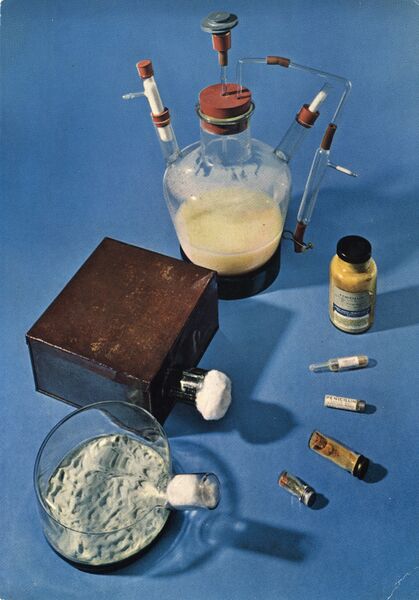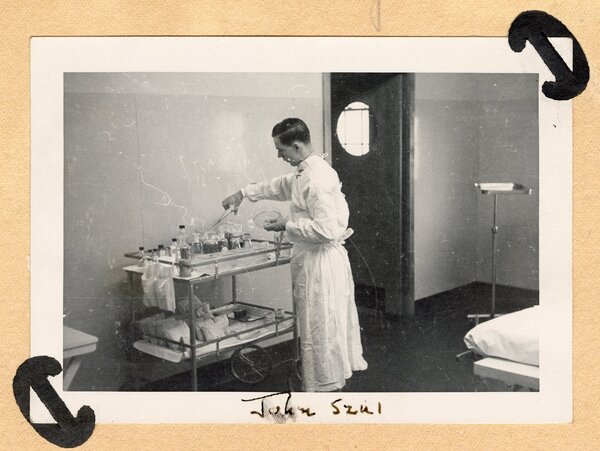Penicillin, that Wonder Drug
"When we did get penicillin, it was so valuable - and you knew it was valuable. You had to save the patient's urine. The patient's urine was a golden color. You knew that it contained penicillin because at that time, the penicillin we gave was also golden...the penicillin was retrieved from the urine...recycled urine was then given to French hospitals to be used for their patients." Loyola graduate Cecelia Fennessy
In 1928, Alexander Fleming first experimented with penicillin mold to inhibit bacterial growth in petri dishes, but its potential to treat infections was largely unrecognized. Oxford University pathologist Howard Florey and his team of microbiologists and chemists began trying to produce enough of the drug to be clinically viable; however, the production of penicillin was labor intensive resulting in the ability to produce only a small quantity of the drug.
When the first successful treament of a patient using penicillin occured, it was found that only about 30% of the drug was metabolized while almost 70% was excreted in urine. Patients needed repeated injections every 4 hours in order to obtain an effective level of the drug in their blood in order to fight infections. The drug was in very short supply, however. Because of this, it was necessary for nurses and other health care providers to collection patient's urine in order to recycle the drug.
The Rockefeller Foundation brought members of the Oxford team to the United States in order to develop mass production of the drug. The Northern Regional Research Laboratory in Peoria, Illinois, was selected as the place to produce naturally fermented penicillin. The method developed by the laboratory remained a closely guarded secret known only to the Allies. In November 1942, penicillin was first used for U.S. troops wounded during an assault in Oran. Efforts to mass produce the drug were successful with close to 3 million units of penicillin available by D-Day.
The 108th General Hospital's first use of penicillin was at their station hospital in Sudbury, England. Originally used to treat venereal diseases such as syphilis and gonorrhea, it soon provide to be efficacious in the treatment of other infections. As the 108th continued using penicillin, the way it was administered changed, first with nurses administering the drug, then the creation of penicillin teams with trained corpsmen administering it. And as the supply of the drug increased, the 108th moved from recycling the drug from patient's urine to each patient having their own bottle of penicillin.

